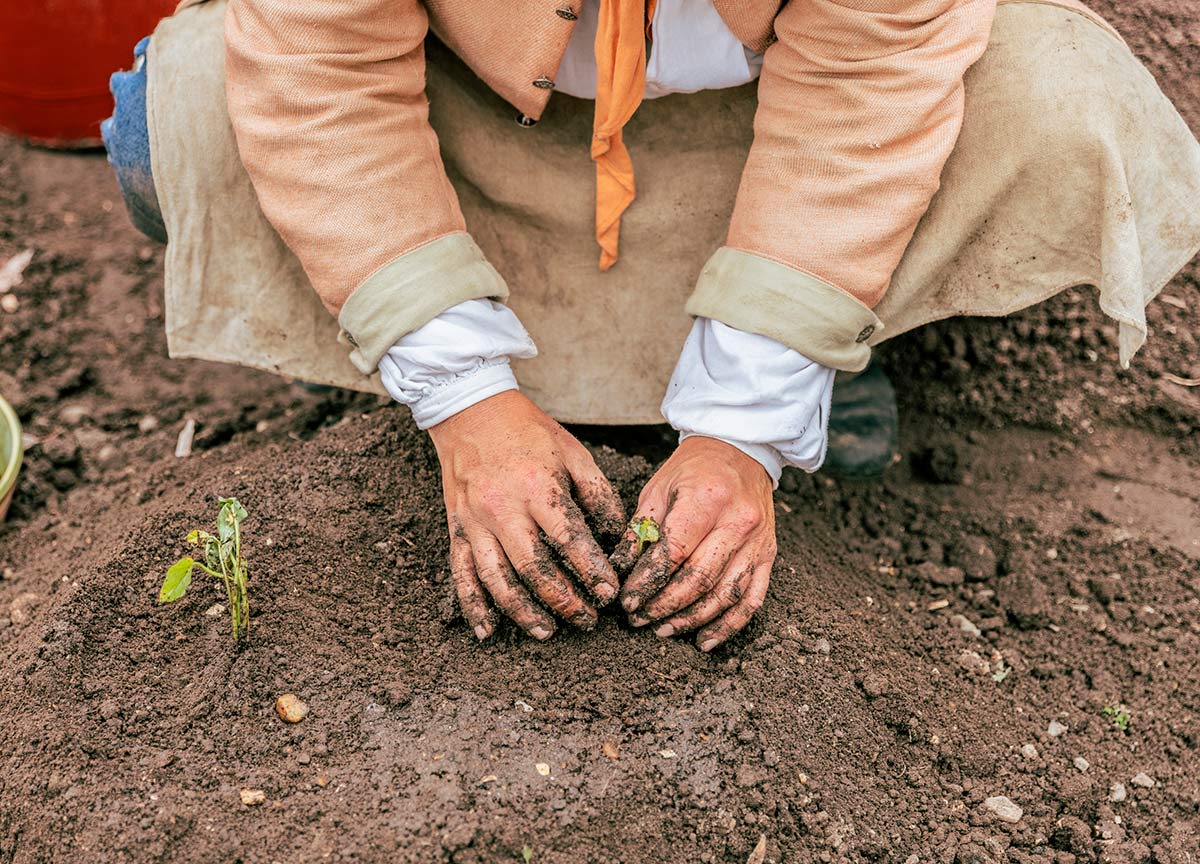Through a fusion of Indigenous, African and European techniques, and the boom of an agricultural revolution, Virginia became one of the wealthiest and most prosperous of the American colonies. The Foundation seeks to better understand and share the stories of enslaved and free planters, gardeners and millers and the ways in which these historic trades built and sustained our nation.
In 18th-century Virginia, farming was how approximately 90% of colonists made a living, including James Madison, George Washington and Thomas Jefferson. Tobacco was the king cash crop and corn meant sustenance was always available. While also the Age of Enlightenment, the 18th century saw an agricultural revolution, thanks to advances in technology such as the plough.
Closely related but also very different, gardening has blossomed in modern times, with many of us landscaping our homes and caring for a variety of plants both indoors and out. Centuries ago, pleasure gardens were all the rage for those of means. Wealthy Virginians such as John Custis IV showed off that wealth by creating ornate garden spaces containing exotic and interesting plant life.
For decades, Colonial Williamsburg has kept these historic practices alive through its Historic Trades program. Comprised of two dozen trades, this initiative sets the Foundation apart from many other living history museums across the globe and remains immensely popular among guests.
To broaden our knowledge and understanding of these two important and connected trades, the Foundation will move their sites to a new location on Francis Street near the intersection of Botetourt Street. Ewing Field will be the new site of Historic Farming and will include Robertson’s Windmill, currently located at Great Hopes Plantation. A new milling trade will also be added and include two full-time millers to demonstrate the art of grinding grains and explain the importance of flours and cornmeal in society.
Moving the Colonial Garden to a larger space allows the Foundation to grow past a gentleman’s garden and explore and interpret the gardening practices of African Virginians and American Indians, both of which were very influential among Europeans.
Expanding these trades also benefits others, including Historic Foodways. Larger growing space allows for more bounty, which in turn gives foodways staff more crops to use in historic recipes. Colonial Williamsburg’s restaurants can also utilize the yield in developing modern dishes, creating a true farm-to-table experience.
This increase in land also gives students a greater hands-on experience, something these future leaders would never experience otherwise. It is our intent to have guests understand the absolute need for agricultural farming and milling to sustain life, and the techniques and crops absorbed from the amalgamation of Indigenous, African and European cultures. This, juxtaposed with the somewhat frivolous pleasure gardens which very few could afford but was well documented in the colonial capital, provides the Foundation with a unique opportunity to tell a story that can only be told in Williamsburg.
For more information, contact [email protected]
